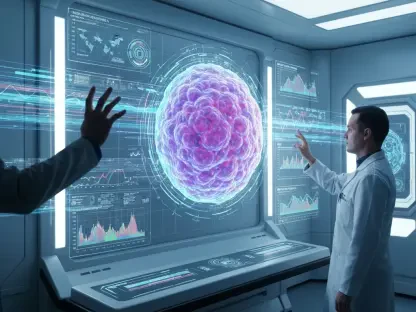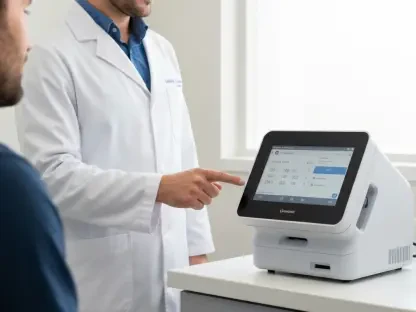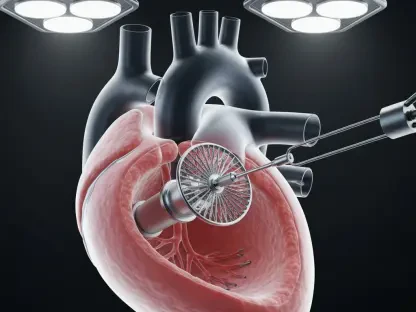In the fast-evolving world of biopharma and digital health systems, Ivan Kairatov stands out with his profound expertise in tech and innovation. With notable experience in research and development, Ivan provides unique insights into the implementation and impact of electronic prescribing and medicines administration systems like MedChart. His knowledge sheds light on how digital transitions enhance healthcare operations, focusing on the recent rollout at Moseley Hall Hospital and the integration of systems like CLEO SOLO.
Can you tell us more about the MedChart system and how it works?
MedChart is an innovative electronic prescribing and medicines administration system designed to streamline the process of recording and administrating medical information. It works by digitizing what was traditionally a paper-based process, providing healthcare teams with enhanced accessibility and efficiency. This modernized system allows for real-time updates and tracking of patient medication histories, significantly boosting the accuracy and speed of information sharing among medical professionals.
How did the rollout process in April 2025 at Moseley Hall Hospital go?
The rollout at Moseley Hall Hospital was executed smoothly, with the MedChart system going live in April 2025. This transition marked a pivotal step in modernizing how medical information is documented and accessed. The hospital witnessed a quick adaptation, thanks to the thorough planning and engagement of the clinical teams involved. Within two weeks, the implementation phase was completed, laying a solid foundation for the system’s broader adoption.
How long did it take to implement MedChart across Ward 8?
The deployment of MedChart across Ward 8 was completed in just two weeks. This ward, with 28 beds dedicated to stroke rehabilitation, required precise coordination to ensure the new system integrated seamlessly without disrupting patient care. The effective communication and collaboration between technology teams and healthcare staff were instrumental in achieving this swift implementation.
Were there any challenges faced during the implementation process?
Implementing a new digital system invariably comes with its challenges. Initially, some resistance to change was observed, as staff adjusted from paper charts to digital entries. Ensuring that all team members were adequately trained to use the system efficiently was crucial. However, once the benefits became apparent, the adaptation process accelerated, leading to a more cohesive and streamlined mode of operation.
How has the MedChart system changed the daily operations on Ward 8?
MedChart has revolutionized daily operations by shifting from manual paper charts to digital charting. This transition has enabled quicker access to medication schedules and patient information, minimizing the time spent on administrative tasks. Nursing staff can now focus more on direct patient care, enhancing the quality of service provided to patients recovering from strokes.
Can you explain how the MedChart system increases accessibility and efficiency for the medical team?
The system boosts accessibility by making patient information available at the touch of a button, anytime and anywhere within the hospital’s network. Efficiency is improved as it reduces the reliance on cumbersome paper charts and manual entries. By simplifying access to medical data and automating processes, team members can make more informed decisions swiftly, enhancing overall patient care.
How does the system improve communication between nursing, medical, and pharmacy staff?
MedChart facilitates seamless communication by providing a centralized database where all patient information is stored. Nursing, medical, and pharmacy staff no longer work in silos but can view comprehensive patient treatment plans and medication histories, shared in real time. This integration fosters clearer communication and collaborative decision-making, mitigating potential miscommunication or errors.
Have you noticed any specific examples of reduced errors with the transition from paper to MedChart?
Absolutely, the transition to MedChart has demonstrated a notable reduction in prescription errors and omitted doses, which were more common with paper documentation. The automated alerts and checks within the system ensure accuracy, and the digital records help avoid transcription errors that frequently occur with manual systems, leading to more reliable patient care.
What feedback have you received from staff and patients about the new system?
Feedback has been overwhelmingly positive. Staff members appreciate the time saved and the efficiency gained through the system, noting a marked improvement in their ability to focus on patient care. Patients benefit from more accurate medication administration and enhanced safety protocols. Many express comfort knowing their medical information is securely managed and readily accessible when needed.
How did the team on Ward 8 respond to adopting the MedChart system?
The team on Ward 8 has embraced MedChart with enthusiasm, recognizing its potential to improve operational efficiency and patient outcomes. As they became familiar with the system’s capabilities, the staff appreciated how it empowered them to deliver care more effectively and efficiently, leading to increased confidence in their daily practices.
Can you elaborate on the phased go-live plan for other wards at Moseley Hall and West Health Hospitals?
Following Ward 8’s successful implementation, other wards at Moseley Hall and West Health Hospitals are set to gradually integrate MedChart by June 2025. This phased approach allows for addressing any operational nuances specific to different wards while ensuring the staff are trained and ready to transition smoothly, minimizing disruptions in patient care across the trust.
What are the expected benefits of completing the MedChart implementation across all inpatient areas?
The completion of MedChart across all inpatient areas is anticipated to bring about comprehensive benefits, including standardized patient records, reduced errors, and improved efficiency. It promises to create a cohesive framework that enhances patient safety and care delivery, fostering a more integrated healthcare environment that can adapt to future technological advances.
How does the CLEO SOLO electronic prescribing solution complement the MedChart system?
CLEO SOLO EPS complements MedChart by targeting specific areas like community paediatrics and ADHD nursing services, which have historically relied on handwritten prescriptions. This system digitizes prescription processes and integrates them with existing electronic patient record systems, thereby enhancing medication management in outpatient settings and addressing issues associated with traditional methods.
What specific challenges does CLEO SOLO address in community paediatrics and the ADHD nursing service?
CLEO SOLO tackles challenges such as handwritten prescription errors, which frequently contribute to delays and misinterpretations. By digitizing these processes, CLEO SOLO enhances accuracy, reduces waiting times for medication approval, and ensures clarity in prescriptions, which is especially vital for specialized services like community paediatrics and ADHD nursing.
How does CLEO SOLO integrate with existing electronic patient record systems?
The integration of CLEO SOLO with existing systems is seamless, designed to work within the framework of electronic patient records. It ensures that prescriptions and patient data synchronize efficiently, enhancing the scope for cross-referencing and continuity of care without system conflicts, thereby enriching the broader digital health ecosystem.
How have handwritten prescriptions been a challenge in these services, and how does CLEO SOLO help?
Handwritten prescriptions pose challenges due to potential inaccuracies and legibility issues which can lead to misinterpretations and delays in medication delivery. CLEO SOLO mitigates these risks by providing a digital platform that guarantees precise, legible prescriptions, significantly reducing the scope for errors and enhancing service reliability.
Could you share insights on the two-year pilot’s progress with the CLEO SOLO EPS?
The two-year pilot with CLEO SOLO EPS has shown promising results, significantly improving the efficiency of prescription management within the targeted services. Staff have adapted well, and the system’s integration capabilities have been proven effective, laying the groundwork for potential broader implementation and future enhancements.
What long-term goals does Birmingham Community Healthcare aim to achieve with these digital systems?
The ultimate aim is to foster a digital-first healthcare environment that enhances patient safety, improves service delivery, and supports better clinical decision-making. Implementing systems like MedChart and CLEO SOLO forms the backbone of a robust digital infrastructure that promises to adapt and evolve with emerging healthcare technologies and needs.
What lessons have been learned from the pilot that could inform future digital transitions within the trust?
One of the key lessons learned is the importance of thorough training and buy-in from all stakeholders. Ensuring staff are comfortable with the new technology is crucial to success. Additionally, phased implementation and flexibility are vital in addressing specific needs and challenges encountered during digital transitions. These insights will guide the trust in executing future digital innovations smoothly.
How does this digital transformation enhance patient safety overall?
Digital transformation enhances patient safety by providing accurate, real-time information that minimizes errors, supports informed decision-making, and improves communication among healthcare teams. It creates a resilient healthcare environment where patient care is optimized through technology, safeguarding against traditional pitfalls associated with manual processes.
Do you have any advice for our readers?
Embrace the evolution of healthcare technology with an open mind. Digital systems are designed to empower healthcare professionals, making patient care more efficient and safer. Understanding and adapting to these innovations can significantly enhance both your practice and patient outcomes, so stay informed and proactive in exploring what these technologies offer.









